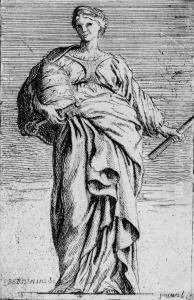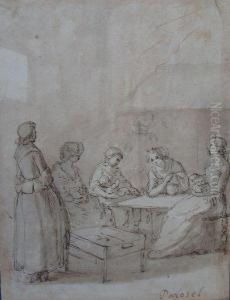Pierre-Ignace Parrocel Paintings
Pierre-Ignace Parrocel was a French painter, engraver, and draftsman, recognized for his talent in depicting battles and historic events, particularly those involving horses and warfare. Born on October 30, 1664, in Brignoles, Provence, he was part of a family of artists, which included his father, Joseph Parrocel, and his son, Étienne Parrocel, both of whom were also painters.
Pierre-Ignace initially trained under his father and later moved to Paris to further his education in art. He was admitted to the Royal Academy of Painting and Sculpture in 1703, where he received the title of 'peintre ordinaire du roi pour les batailles' (ordinary painter to the king for battles) in 1705. This prestigious position highlighted his specialty in capturing the intensity and dynamism of military scenes.
Throughout his career, Parrocel enjoyed royal patronage and was commissioned to create works for various significant sites, including the Palace of Versailles. His paintings often depicted scenes from the campaigns of Louis XIV, and his ability to infuse his works with drama and action made him a sought-after artist for such themes.
Parrocel's oeuvre is also notable for its historical accuracy and attention to detail, particularly in his representations of horses and the chaos of battlefields. His skill in this area was likely influenced by his father, who was also known for similar subject matter, and was further honed through his studies and professional experience.
In addition to his battle scenes, Parrocel produced religious paintings, portraits, and was skilled in the art of etching. His works can be found in various museums and collections across France and reflect the Baroque style that was prominent during his time.
Pierre-Ignace Parrocel died on April 15, 1739, in Paris. His legacy continued through his descendants, as the Parrocel family remained an artistic dynasty for several generations. His contributions to French art, particularly in the depiction of military history, have been acknowledged by art historians and enthusiasts alike.

